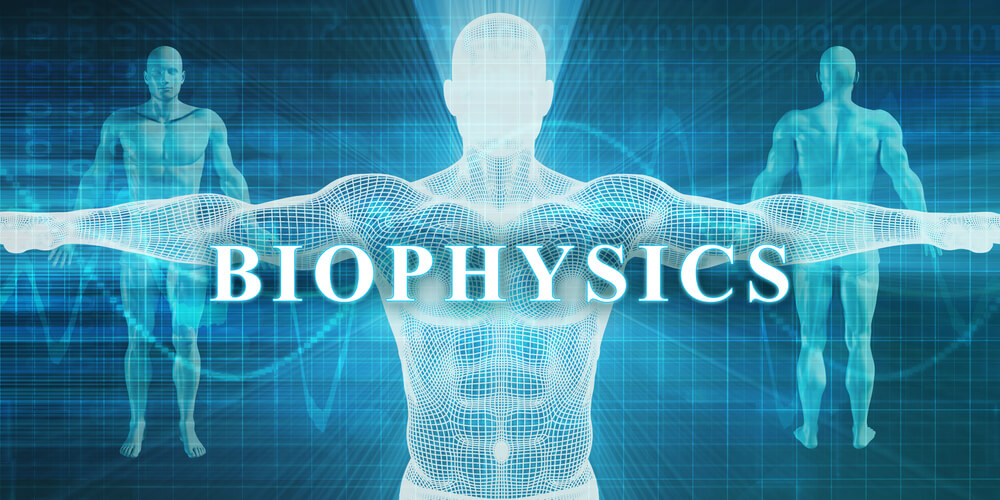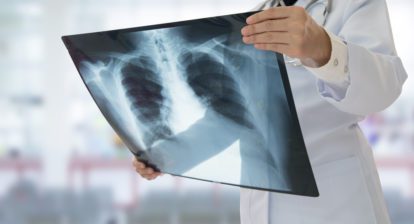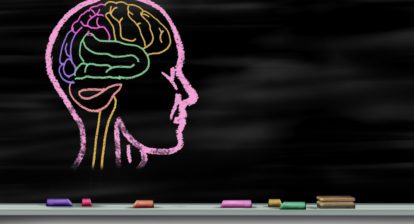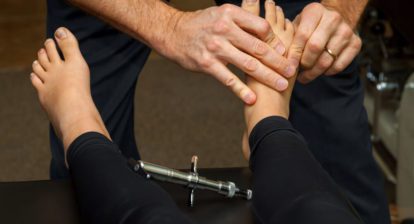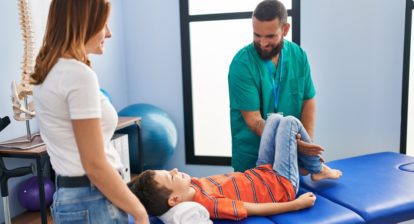– Deed E. Harrison, DC –
CBP (Chiropractic Biophysics) patient management protocol involves all typical initial patient examination procedures including the consultation, examination and pain, disability and quality of life questionnaires. In addition, CBP treatment consideration requires, without exception, a full-spine posture assessment as well as full-spine AP and lateral standing spinal radiographs. Posture needs to be quantitatively assessed as rotations and translations of the head, thorax and pelvis in three dimensions. The x-rays need to be digitized and quantified, using the Harrison posterior tangent method for the sagittal images and with the modified Risser-Ferguson on the AP images.
CBP technique interventions are known to improve patients’ pain, disability, quality of life, and neurophysiological measures in those suffering and presenting with
abnormal spine and posture structural deformities (subluxations).
CBP structural rehabilitation is suggested as either 3 times per week for 12 weeks (36 treatments) or 4 times per week for 9 weeks (36 treatments). However, the CBP published controlled trial data support treatment blocks of 30-40 treatment sessions over the course of 9-12 weeks. An initial patient who has acute or chronic pains and who has not been treated recently or at all for their current spine issue should be seen for an initial 6-12 treatments to provide pain relief. Aft er signs of relief have occurred, a progress exam should be performed and the patient should be transitioned or ‘graduated’ to CBP corrective care interventions.
CBP treatment occurs in ‘blocks of care.’ Numerous CBP controlled clinical trials provide evidence for spine altering changes to occur in the range of 30-40 treatment sessions. The end of each block of CBP care requires a progress exam which includes all of the typical assessment procedures as well as a posture and x-ray assessment. Exam results may either dictate the need for further CBP treatment or the recommendation for ‘supportive’ or maintenance care. An initial block of CBP structural rehabilitation will include any acute care provided in the first 2-4 weeks.
While the CBP published research data does not specifically support 6-12 month care plans, based on the available data, an adult typically needs 6 months of corrective care (e.g. 72 treatments over 6 months at 3x/week) which is an evidence-based recommendation based on results from randomized trials. Although, any given patient may require a shortened (i.e. 1-2 months) or longer treatment programs (6-12 months) based on their initial presenting postural, spinal, and pain and disability parameters. There is also support for supportive/ maintenance care at a frequency of approximately 1-2x/month. CBP technique has an abundance of clinical evidence supporting its effectiveness in correcting spine deformity and abnormal posture. Recently, systematic reviews have summarized the clinical evidence as reported in the published controlled trials on these methods for the cervical and lumbar regions.
CBP technique interventions are known to improve patients’ pain, disability, quality of life, and neurophysiological measures in those suffering and presenting with abnormal spine and posture structural deformities (subluxati ons). Due to the scientific credibility of CBP’s 240 (plus) peer-reviewed publications, the International Chiropractor’s Associati on (ICA) has awarded CBP Technique with a professional Diplomate Program – the new 420 hour CBP Diplomate led by Dr. Deed Harrison (see www.IdealSpine.com for details). Due to the economic and health benefits of CBP Technique methods and the global burden of spine disorders, CBP technique should continue to grow in the chiropractic, physical medicine, and general rehabilitation settings for spine disorders and for patient health and well-being. CBP will continue to publish high quality research and develop better patient intervention strategies. As such, it should rightly take its place as a leading patient rehabilitation approach for the correction of spine and posture abnormalities in Chiropractic Education and Technique.


